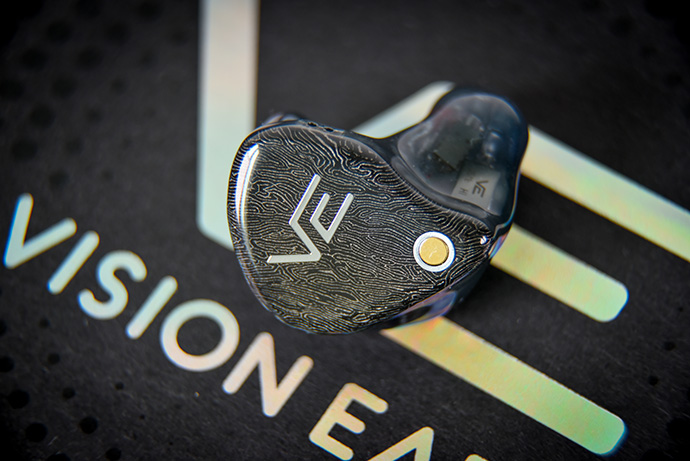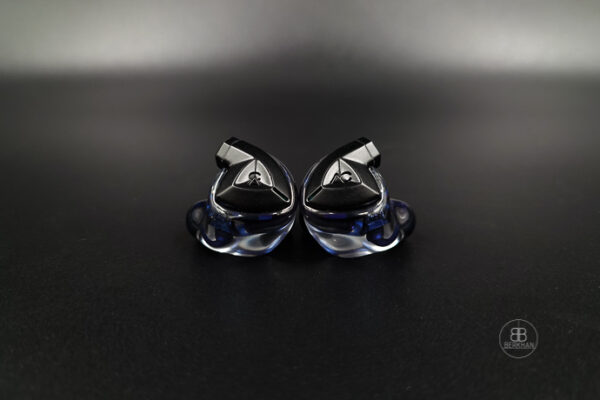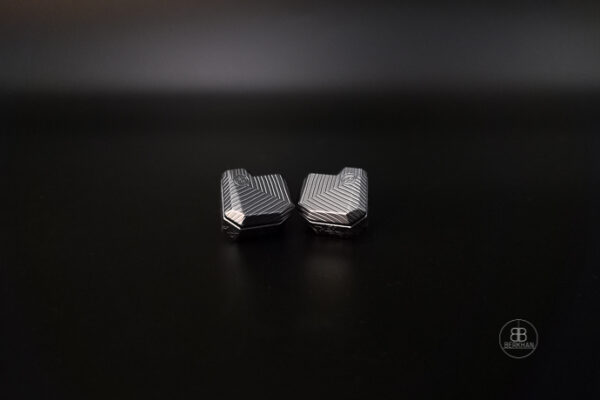If Google brought you here directly, jump to page one!
Comparisons
In the following segment we will check out how the new XCON compares to two other very popular IEMs on the market. Unlike the XCON both are hybrid designs using dynamic drivers for lows, so there will be a bit of comparing apples and oranges, my goal is to give you a better understanding of how the XCON sounds.
I used Lotoo’s PAW Gold Touch II for comparing the monitors. The following is based on the X1 setting – darker sound.
Vision Ears EXT MK2
First up in the comparison game is Vision Ears’ latest release and Headfonia IEM of 2024, the EXT MK2. It uses a dynamic driver for lows, a dynamic driver for mids and four electrostatic drivers for treble. Coming in at €3,100 Euro it is also significantly more expensive than the XCON. Unlike the XCON, it is a strictly universal IEM, which cannot be tailored to your ear’s shape.
The EXT MK2 has more impact in the lows, better textured bass and especially a more powerful sound than the XCON. The XCON is of darker tonality than the EXT. This, to me, is especially evident in the lower midrange, where the XCON delivers a fuller and denser, but also darker, sound than the EXT. Overall, the EXT has a more natural neutral sound with higher levels of richness compared to the XCON.
The EXT outshines the XCON when it comes to instrumental separation, resolution, texture and layering. It has noticeably better values here, which also reflect the price difference in my opinion. The EXT also creates a wider sound stage, with better reach left and right.
To me, the EXT MK2 sounds richer and has a more saturated glow in the mids and especially in the treble. The EST implementation of the EXT MK2 is remarkable, and cannot be held in the same league as the XCON’s. XCON has a darker and more tamed treble response, unlike the energetic and rich top-end of the EXT MK2.
The biggest advantage of the XCON certainly is its switchable tuning system, which turns them into a completely new IEM in an instant.
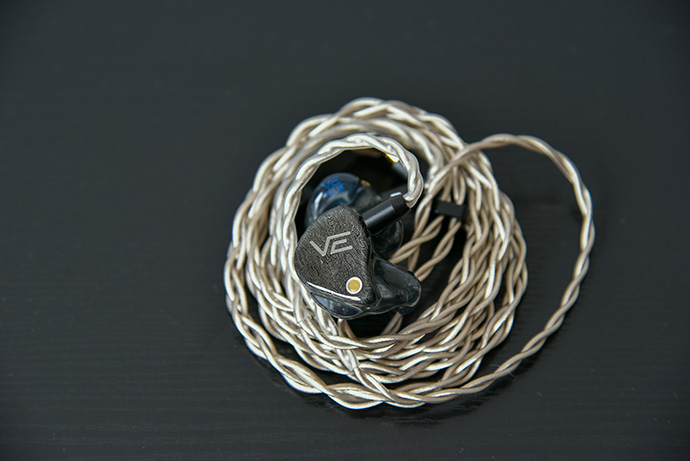
FIR Audio Radon 6
The Radon 6 is one of FIR’s six-driver hybrid custom IEMs. It uses a kinetic DD for lows, two open balanced armatures for mids, one open BA for upper mids, one open BA for treble and an open EST super treble driver. Similar to the XCON, you can also change signatures with the Radon 6, although these changes primarily focus on the low-end.
I have the red module installed in my CIEM, as it is the most balanced option. The Radon 6 is available for $3,299 USD.
When comparing these two on a sonic level, there are some similarities to be found. Both have a darker sound to them, although the Radon 6 still is more neutrally tuned than the XCON. It doesn’t possess the same density and darkness in the lower regions as the XCON. Radon 6 has a more impactful, faster and weightier bass, due to the use of a dynamic driver.
One thing that makes the Radon 6 special is the use of its kinetic bass, which is positioned towards your ear, rather than in your ear-canal. This makes the bass physically perceptible.
Both models offer a full and big sound in their bass and mids, but the XCON delivers higher density, whereas the Radon 6 is airier and lighter. This in turn can be observed as well in instrumental separation and imaging sharpness. The Radon 6 paints a higher resolution picture, where you can hear finer nuances of the music.
In technicalities the Radon 6 also delivers higher levels. It spreads a wider sound stage and a blacker background with higher contrast to the musicians.
In the treble, the XCON shows an earlier roll-off than the Radon 6, which has wider extension. This pushes more air into the signature, but also can cause some discomfort for people with lower treble tolerances. The XCON is calmer in the treble and doesn’t sport the in-your-face brightness of the upper treble of the Radon 6.
All in all, the XCON is the smoother and slightly darker sounding monitor of the two, while the Radon 6 might be perceived as the technically more potent one. Of course, the XCON again has the advantage of being the Harvey Dent IEM between the two models.
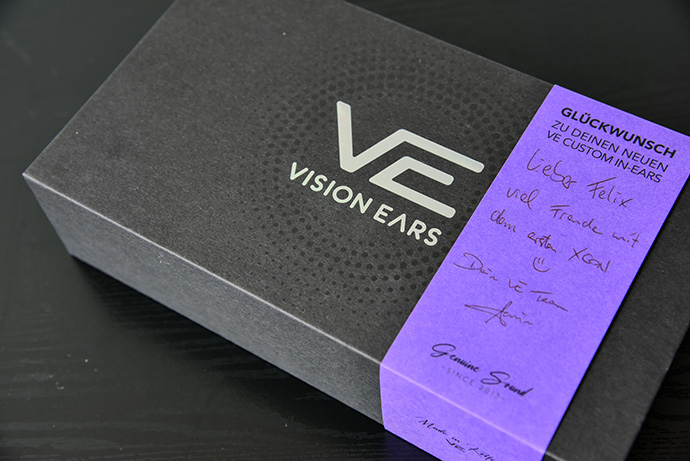
Conclusion
With the new custom Line-up, Vision Ears has set out to create something for everyone. The XCON is a particularly chameleon-like IEM, that gives you two contrasting signatures, which truly makes this a two-in-one product.
Vision Ears has redesigned the market’s standard dip-switch system to a more aesthetically pleasing version. As far as I know, this was due to the dip-switch often being flipped unintentionally. However, it raises the question, if the new magnetic system really is the solution or if it rather replaces one problem with another.
While you are protected from unwanted switches, you cannot change signatures on the fly as easily as before. I guess, there is no ideal solution really. What I must note though, is that it must have been a complex task to implement this switch, that not only adjusts one frequency spectrum but two.
All of that aside, the XCON is a great monitor for everyone who seeks a darker and mellow sound, that oozes of body and weight in the lower regions. In my opinion, it is an excellent choice for acoustic music, where the natural and full sound comes in with perfection.
And in case you need something different, just remove the magnet and turn the XCON in a neutral IEM for when you want to critically listen to your tunes.
Summary
Pros:
+ Build Quality
+ Emotional midrange
+ Full and natural sound
+ Switchable tuning giving two CIEMs in one
Cons:
– Typical BA Bass sound
– Smooth and darker midrange covers up resolution
– New switch system not possible to change on the fly







